A new system for quantitative evaluation of infant gaze capabilities in a wide visual field
- PMID: 26346053
- PMCID: PMC4562110
- DOI: 10.1186/s12938-015-0076-7
A new system for quantitative evaluation of infant gaze capabilities in a wide visual field
Abstract
Background: The visual assessment of infants poses specific challenges: many techniques that are used on adults are based on the patient's response, and are not suitable for infants. Significant advances in the eye-tracking have made this assessment of infant visual capabilities easier, however, eye-tracking still requires the subject's collaboration, in most cases and thus limiting the application in infant research. Moreover, there is a lack of transferability to clinical practice, and thus it emerges the need for a new tool to measure the paradigms and explore the most common visual competences in a wide visual field. This work presents the design, development and preliminary testing of a new system for measuring infant's gaze in the wide visual field called CareToy C: CareToy for Clinics.
Methods: The system is based on a commercial eye tracker (SmartEye) with six cameras running at 60 Hz, suitable for measuring an infant's gaze. In order to stimulate the infant visually and audibly, a mechanical structure has been designed to support five speakers and five screens at a specific distance (60 cm) and angle: one in the centre, two on the right-hand side and two on the left (at 30° and 60° respectively). Different tasks have been designed in order to evaluate the system capability to assess the infant's gaze movements during different conditions (such as gap, overlap or audio-visual paradigms). Nine healthy infants aged 4-10 months were assessed as they performed the visual tasks at random.
Results: We developed a system able to measure infant's gaze in a wide visual field covering a total visual range of ±60° from the centre with an intermediate evaluation at ±30°. Moreover, the same system, thanks to different integrated software, was able to provide different visual paradigms (as gap, overlap and audio-visual) assessing and comparing different visual and multisensory sub-competencies. The proposed system endowed the integration of a commercial eye-tracker into a purposive setup in a smart and innovative way.
Conclusions: The proposed system is suitable for measuring and evaluating infant's gaze capabilities in a wide visual field, in order to provide quantitative data that can enrich the clinical assessment.
Figures
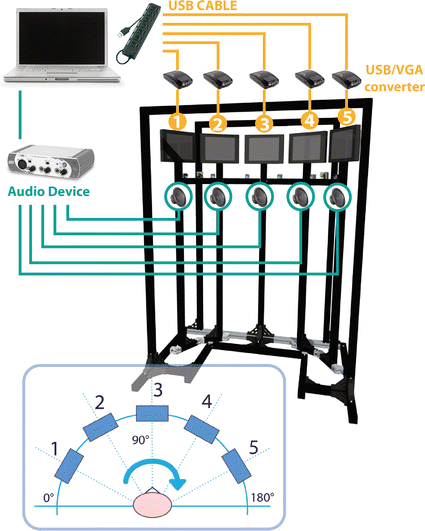

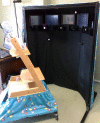
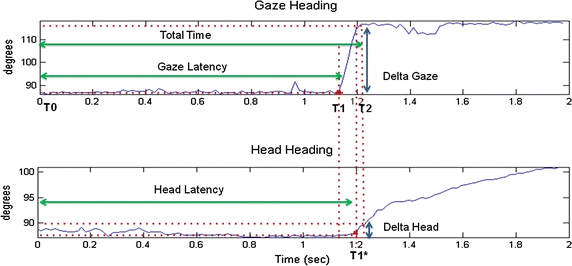
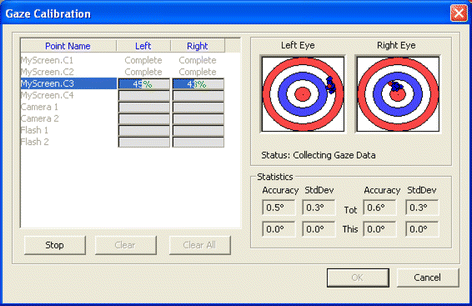

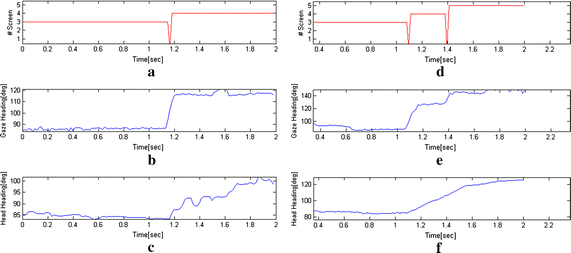
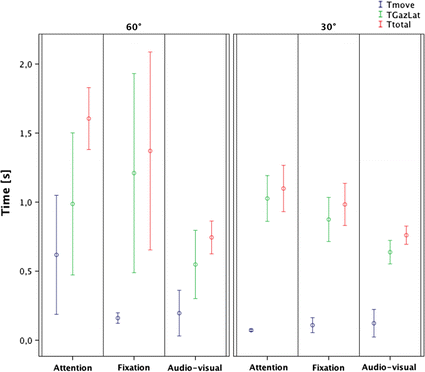
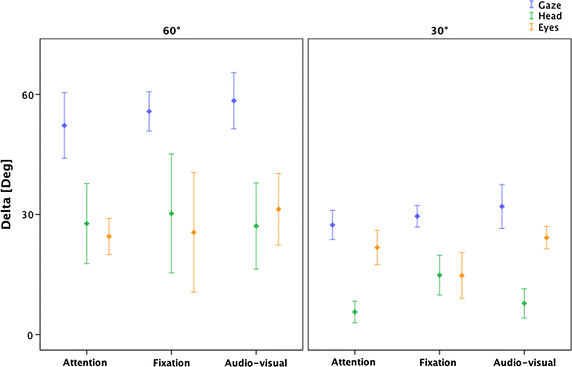
References
Publication types
MeSH terms
LinkOut - more resources
Full Text Sources
Other Literature Sources
Miscellaneous

